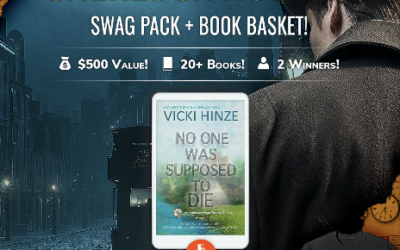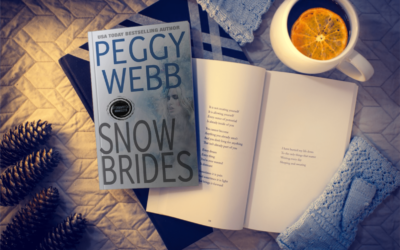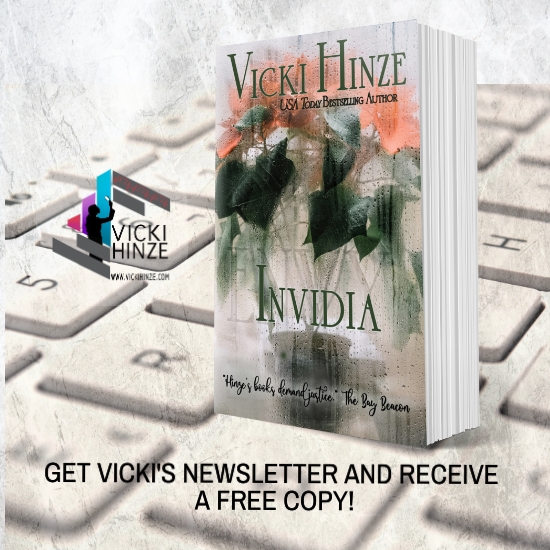Vicki Hinze © 2003-2011
What is Point of View (POV)?
It is the perspective through which readers will experience the story.
From the inception of the story idea, the writer makes story-telling choices. She chooses characters, plot, setting, theme—and how best to depict them. The writer also chooses who is best to depict specific story elements. That who defines the POV character.
There are many options when it comes to point of view, including:
* Omniscient
* First Person
* Second Person
* Third Person
Omniscient is godlike. Where story events are not filtered through the perspective or the eyes of any character. (Though the writer may at times dip into the POV of any character.) Often this POV is seen in literary novels, and sometimes in commercial fiction. Typically, the writer will use an inverted pyramid structure, starting out with an overview and then narrowing the scope to a protagonist or antagonist.
First Person POV is easily discerned because the novel is seen through the eyes of one person, typically the protagonist. Pronouns used are I or me (versus he or she. Outside of the mystery genre, this POV was far more popular in commercial fiction decades ago than it is now.
In using First Person POV, the writer accepts certain benefits. The story feels more immediate to the reader and emotional empathy is created more swiftly and intensely due to the intimate nature of First Person POV. The writer also, however, operates under specific handicaps. The reader can only know what the POV character knows. Can only see, hear, taste, touch, smell and experience what the POV character does.
Second Person POV is when one person tells us the story of another person. This narrator can be reliable, or unreliable–truthful with the reader, or a trickster. It’s virtually ignored and all but obsolete in today’s commercial fiction.
Third Person POV is when the writer incorporates pronouns like he and she (versus I) and is most prevalent in commercial fiction at this time. For that reason, we’ll spend the lion’s share of this article exploring it.
Once the writer chooses Third Person POV, she then must choose whether that POV will be limited to one character or two, or if multiple viewpoints will be used. It’s extremely common in romance novels to use the POV of the heroine and the hero. In mysteries, typically we see limited POV, meaning only the viewpoint of the protagonist.
The decision on whose POV to use in the novel, or within the scenes of a novel, is critical. Experts at craft have various opinions on what criteria a writer should use to make this decision. I suggest the following aids:
1. Decide who has the most to lose in the novel. Usually that is the protagonist. Therefore, he/she should have POV preference throughout the novel.
2. Keeping in mind that the needs of the story dictate every element in the story, establish the POV pattern early on and then stick to it. For example, in the opening scene, the writer uses the heroine’s POV. In the following scene, the writer uses the hero’s. In the third scene, the writer switches back to the heroine.
3. By the third scene, the writer has established the POV pattern and he/she should (loosely) adhere to it throughout the novel. This pattern sets a novel rhythm that the reader follows and anticipates.
When Can A Writer Change POV?
Some experts say to only change POV at the end of a chapter. Others say at the end of a scene. Still others say it’s okay to switch POV if the character changes settings. The simple truth is there is no easy answer. You can change POV at the end of a chapter, scene, sequel, or in the middle of any of them.
Why Does a Writer Change POV mid-scene or chapter? And how does she do it?
Reserve this mid-scene/chapter change for those times when a new POV character has more to lose than the original POV character.
Example:
A scene opens with the heroine being introspective on her troubled marriage. She decides it’s worth fighting for, and resolves to make the marriage work. Enters the hero, who tells the heroine he’s filed for a divorce.
In this case, do you stay in the heroine’s POV or switch to the hero’s?
You’d stay in the heroine’s POV because she doesn’t want the divorce—she has the most to lose.
Example:
You open the scene with the hero phoning the heroine. Her kidnapped child has been located but she must extract the child herself (which personifies her inner conflict that fosters her emotional character growth).
Do you stay in the hero’s POV or switch to the heroine’s?
Here, you switch to the heroine’s POV because on hearing this news, she has the most to lose. She must face her fear (her inner conflict) and rescue her located child.
How this might read:
The phone rang in his ear. John rubbed at his forehead, stared through the curtainless window at the neon lights on the building across the street. How did he tell Kristen he’d found her baby but couldn’t get her out of there?
“Hello.”
“Kristen.” John cleared his throat. “I’ve found her.”
Kristen swallowed a gasp and squeezed the phone receiver. Her eyes blurred, the back of her nose burned, and she locked her knees to stay upright. “Is she . . . ?” Oh, God. She couldn’t say it. Couldn’t even think it.
“She’s alive.”
In this example, we switched POV when Kristen heard the news, using a transition, which is a bridge from one person to the other. Here we used an emotional bridge. John’s disclosure prompted Kristen’s response. (Action/reaction.)
Another efficient way to transition is to use an object. In the above example, we could have stayed in John’s POV until the end of the call. When he hung up, then Kristen could hear the dial tone, changing the point of view.
A caution on transitions: keep them short. Imagine a bridge that takes you from Point A to Point B. The longer the span, the weaker it is. Keep the span short, tight, concise and it’ll be effective.
How Many Points of View does a writer need?
As many as it takes to convey the writer’s intent. In the majority of commercial fiction, the writer usually restrains herself to using the Points of View of the protagonists and perhaps the antagonist. Occasionally, a writer will incorporate the POV of a secondary character to fulfill a specific story purpose (such as conveying information the reader needs for the story to make sense that the protagonist doesn’t know).
Remember that with each POV change it takes the reader a few pages to make the shift and get into the head of the new POV character.
Obviously, the writer doesn’t want to switch POV too often (which is unkindly referred to as head hopping) or the reader gets weary and is unable to emotionally attach to any character. Without that emotional attachment, there is no reader empathy. And a story the reader doesn’t care about, or can’t identify with, the reader stops reading.
The writer shapes the story she wants to tell through the choices of story elements she incorporates. Among other things, she manipulates reader empathy, pacing, emotional distance, and perspective by choices on Point of View.
Recommended Reading:
THE ART OF FICTION, Gardner
CHARACTERS & VIEWPOINT, Card
MAKING SHAPELY FICTION, Stern




